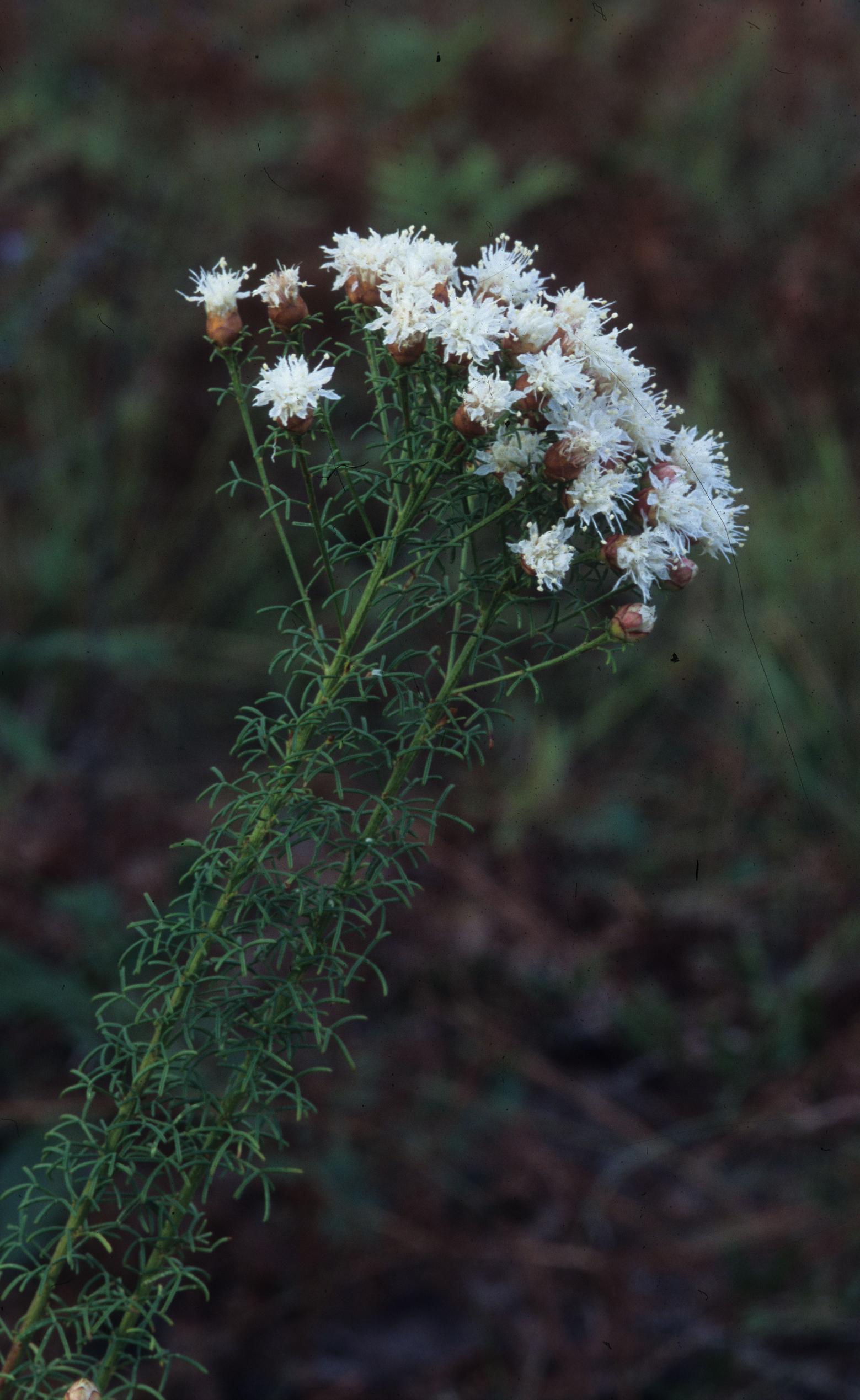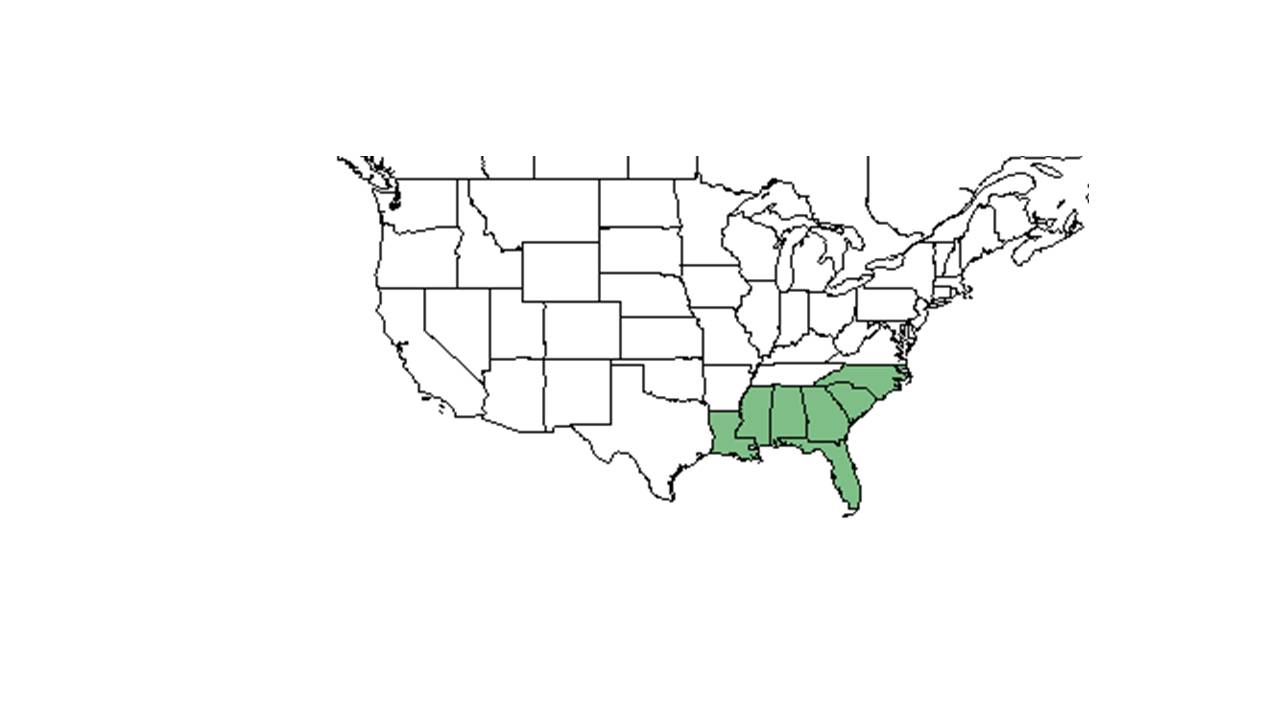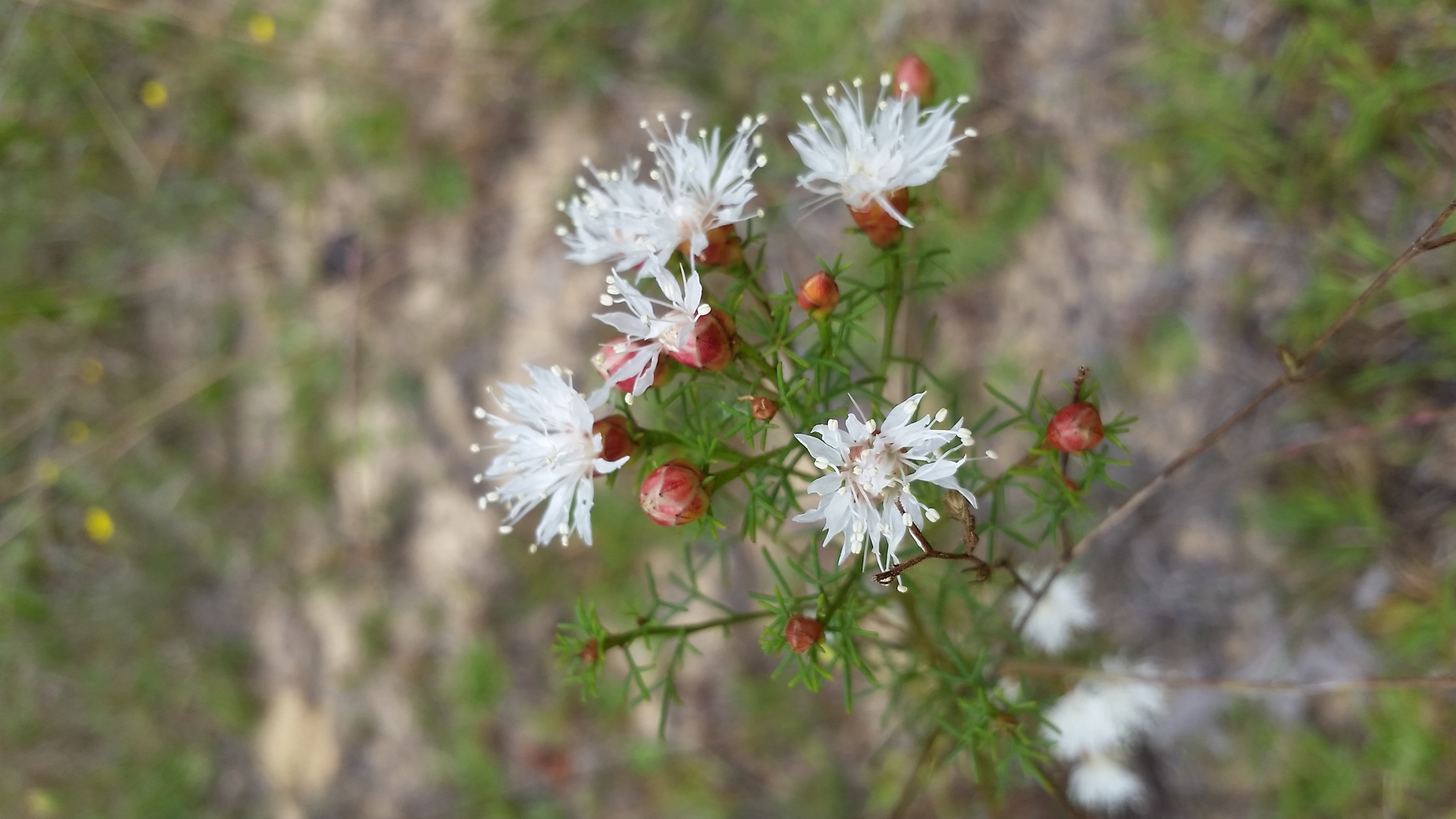Dalea pinnata
| Dalea pinnata | |
|---|---|

| |
| Photo was taken by Gil Nelson | |
| Scientific classification | |
| Kingdom: | Plantae |
| Division: | Magnoliophyta - Flowering plants |
| Class: | Magnoliopsida – Dicotyledons |
| Order: | Fabales |
| Family: | Fabaceae ⁄ Leguminosae |
| Genus: | Dalea |
| Species: | D. pinnata |
| Binomial name | |
| Dalea pinnata (J.F. Gmel.) Barneby | |

| |
| Natural range of Dalea pinnata from USDA NRCS Plants Database. | |
Common name: Summer farewell
Contents
Taxonomic notes
Synonyms: Dalea pinnata (J.F. Gmelin) Barneby var. pinnata; Petalostemum pinnatum (J.F. Gmelin) Blake; Kuhnistera pinnata (J.F. Gmelin) Kuntze
Variety: Dalea pinnata (J.F. Gmelin) Barneby var. trifoliata (Chapman) Barneby
The Latin name refers to the finely pinnate leaves.[1]
Description
Distribution
Distributed from North Carolina south to Florida and west to Louisiana.
Ecology
Habitat
D. pinnata occurs in longleaf pine-scrub oak sandhills, pine flatwoods, pine-palmetto barrens, turkey oak sand ridges, sand scrubs, lake edges, and on grassy slopes near bogs. Is also found in human disturbed areas such as roadsides, fields,and forest edges. It can grow in sand, sandy loam, and sandy clay.[2] It was found to be among the most cold-hardy legumes found in southern Georgia, where it persists through repeated frosts and was present in January and February field surveys.[3]
Associated species includes Pinus palustris, Quercus incana, Quercus laevis, Chrysopsis gossypina, Pityopsis aspera, Sorghastrum nutans, Rubus cuneifolius, Liatris gracilis, Lechea, Sericocarpus tortifolius, Solidago odora, Eupatorium album, and Trichostema dichotomum.[2]
Phenology
It has been observed flowering August to November and fruiting in October.[2]
Seed dispersal
This species disperses by gravity. [4]
Seed bank and germination
This species is capable of forming soil seed banks with seed dormancy capable of being broken through scarification. Light is not required for germination[5].
Fire ecology
It is associated with frequently burned areas[2].
Pollination
Hall and Ascher (2014) observed Trachusa fontemvitae and 9 species of Megachilidae on D. pinnata at the Ordway-Swisher Biological Station in North-Central Florida.[6]
Conservation and management
Cultivation and restoration
Photo Gallery
References and notes
- ↑ [[1]]Native Florida Wildflowers. Accessed: April 16, 2016
- ↑ 2.0 2.1 2.2 2.3 Florida State University Robert K. Godfrey Herbarium database. URL: http://herbarium.bio.fsu.edu. Last accessed: October 2015. Collectors: R. A. Norris, R. Komarek, Robert K. Godfrey, P. Genelle, G. Fleming, L. J. Brass, O. Lakela, Cyrus Darling, Paul M. Cassen, Robert Kral, John Morrill, R. E. Perdue, Jr., Andre F. Clewell, Leonard J. Brass, Daniel B. Ward, Sidney McDaniel, Gary R. Knight, Cecil R Slaughter, David Hall, Gary Schultz, Loran C. Anderson, Jean Wooten, John B. Nelson, S. Bennett, William B. Fox, Harry E. Ahles, M. Garland, R. D. Houk, Kurz, Dennis Hardin, C. Chapman, S. Chapman, Cindi Stewart, - MacClendons, Eula Whitehouse, Delzie Demaree, Michael B. Brooks, and Channell. States and Counties: Alabama: Mobile and Pike. Florida: Bay, Citrus, Clay, Collier, Columbia, Dixie, Escambia, Franklin, Gadsden, Highlands, Jackson, Jefferson, Leon, Liberty, Madison, Palm Beach, Pinellas, Putnam, Santa Rosa, Seminole, Suwannee, Taylor, Wakulla, and Walton. Georgia: Baker and Bulloch. Mississippi: Hinds, Jackson, and Perry. North Carolina: Cumberland, George, and Robeson. South Carolina: Colleton.
- ↑ Hainds, M. J. (1995). Legume population dynamics in a frequently burned longleaf pine-wiregrass ecosystem. Master of Science Thesis, Auburn University. 111 pages.
- ↑ Kirkman, L. Katherine. Unpublished database of seed dispersal mode of plants found in Coastal Plain longleaf pine-grasslands of the Jones Ecological Research Center, Georgia.
- ↑ Perez, H. E., F. Almira, et al. (2009). "Germination Timing and Dormancy Break in Seeds of Summer Farewell (Dalea pinnata, Fabaceae)." Ecological Restoration 27(2): 160-168.
- ↑ Hall, H. G. and J. S. Ascher (2014). "The Distinctive Bee Fauna (Hymenoptera: Apoidea: Anthophila) of Sandhill Habitat at the Ordway-Swisher Biological Station in North-Central Florida." Journal of the Kansas Entomological Society 87(1): 1-21.
